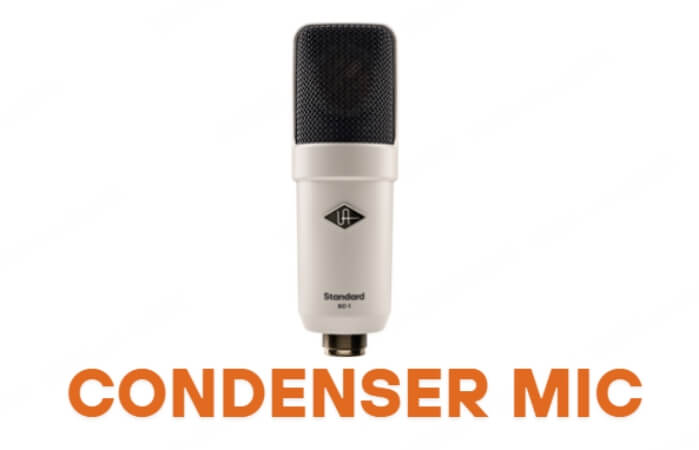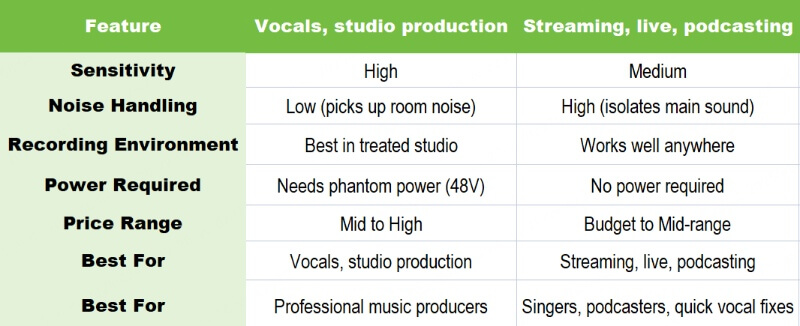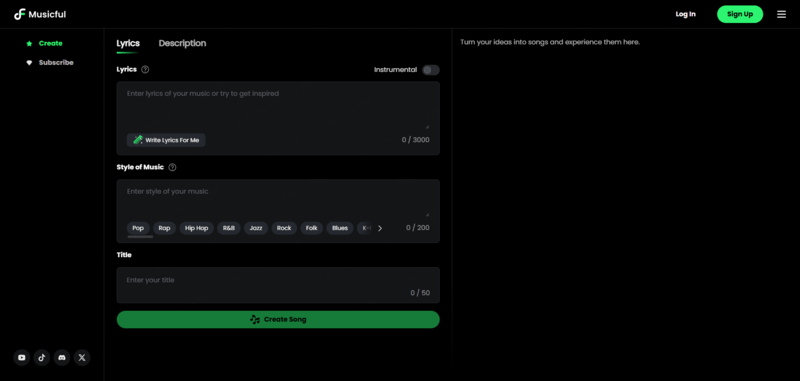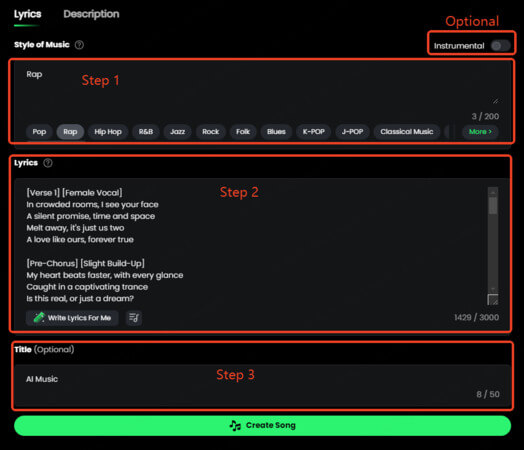Jun 05, 2025
6 min read
Condenser mic vs dynamic mic — which one is better for your voice, content, and studio setup?
Choosing the right microphone can make or break your audio quality. But how do you decide between a condenser and a dynamic mic?

In this guide, we'll explain the key differences between condenser and dynamic mics, show you the best mics for streaming and vocals.
And a pro-level tip: how to test your mic using AI-generated music — so you know exactly what works best for your voice!
Part 1: Condenser Mic vs Dynamic Mic: Which Should You Choose?
1. What Is a Condenser Mic?
A condenser microphone is highly sensitive, capturing sound with great detail and accuracy. It works by using a capacitor to convert sound waves into electrical signals, making it ideal for use in studios.

Best for:
⭐ Studio vocal recordings
⭐ Voice-overs
⭐ Acoustic instruments
⭐ Quiet, treated rooms
Pros
✅ High-frequency response and clarity
✅ Excellent for capturing vocal nuances
✅ Widely used in professional settings
Cons
❌ Sensitive to background noise
❌ Can pick up room reverb if not acoustically treated
2. What Is a Dynamic Mic?
A dynamic microphone is more robust and less sensitive. It uses an electromagnetic coil to convert sound. It is ideal for live performances and streaming, where background interference is minimised.

Best for:
⭐ Live vocals
⭐ Podcasting
⭐ Streaming in noisy environments
⭐ Home setups without acoustic treatment
Pros
✅ Great noise rejection
✅ Durable and affordable
✅ No external power(phantom power) needed
Cons
❌ Slightly less detail in high frequencies
❌ Not ideal for soft, nuanced recordings
3. Dynamic vs Condenser Mic Comparison Table

● If you're streaming in a noisy room, go with a dynamic mic.
● If you're recording vocals in a quiet space, a condenser mic will give you more depth and clarity.
Part 2: Top Recommendations: Best Dynamic and Condenser Mics
Best Condenser Mics for Streaming & Vocals
1. Audio-Technica AT2020: Affordable and clean sound for beginners
2. Rode NT1-A: Industry favorite for studio-quality vocals
3. Elgato Wave:3: Plug-and-play USB condenser for streamers
Best Dynamic Mics for Streaming & Podcasts
1. Shure SM7B: Pro-level dynamic mic used by top podcasters
2. Rode PodMic: Budget-friendly with crisp, punchy vocals
3. Samson Q2U: Dual USB/XLR mic, perfect for beginners
Need help choosing based on your budget or setup? Consider room acoustics and how much background noise you want to avoid before deciding.
Part 3: Bonus Tip: How to Create AI Music and Test Your Mic?
Still debating between a condenser and a dynamic microphone? Here's an easy way to find out which works best for your voice: record over AI-generated music and compare the results.
With tools like Musicful, you can generate original tracks in seconds, then download the instrumental and test both mics by singing or speaking over the same track.
With Musicful, you can create tracks by entering text, then leave everything to AI. You don't need any musical skills.

Key Features:
⭐ Download instrumental versions(no vocals)
⭐ Export your songs as MP3 or MIDI for further creation
⭐ No music skills required
⭐ Support web, iOS and Android
How to Test Your Mic with Musicful?
Step1️⃣. Click on the green square below.
Get Music NowStep2️⃣. After log in, enter the lyrics and your music styles, like "Undertale, game soundtrack". If you don't have lyrics, you can click "Write Lyrics for Me" let AI generare the lyrics, or choose "Description", enter your description about your song.

Step3️⃣. After clicking "Create Song", you'll get 2 different songs. Choose one you like and click Download - Download Instrumental for melodies. Check the great undertale song I made below.

Step4️⃣. Use your condenser mic and dynamic mic separately. Record the same phrase, lyrics, or script over the instrumental.
Step5️⃣. Playback both recordings and compare:
● Which mic sounds more natural for your voice?
● Which one captures better clarity or eliminates background noise?
● Which recording feels "ready" for your content?
Pro Tip: Try listening on both headphones and speakers to get a real-world perspective.
Part 4: FAQ about Condenser vs Dynamic Mics
1. Is a dynamic mic better than a condenser?
The type of microphone you need depends on your recording environment and purpose.
A dynamic microphone is better suited to noisy rooms, live performances or streaming, where background noise is a concern.
A condenser mic, on the other hand, is better suited to quiet spaces where detailed, high-fidelity sound is required, making it ideal for vocals and studio work.
2. What are the disadvantages of a dynamic microphone?
Although dynamic microphones are durable and resistant to noise, they have some limitations.
● Less sensitive to subtle vocal nuances
● Lower frequency response range
● Not ideal for professional vocal recordings that require detail and clarity
They are better suited to live events, podcasts and streaming than to studio-grade music production.
3. Is Yeti a dynamic or condenser mic?
The Blue Yeti is a condenser microphone, rather than a dynamic microphone. It is USB-powered and is commonly used for podcasting, streaming and voice-overs thanks to its clear, crisp sound quality.
However, as it is a condenser microphone, it can pick up background noise if your room is not acoustically treated.
4. Why would you use a dynamic microphone?
A dynamic microphone is ideal for:
● Record in noisy environments
● Need a mic for live performances or on-stage use
● Want something durable and easy to use
● Stream or game in a room without soundproofing
Its focused pickup pattern helps to eliminate unwanted noise, making it popular with casual creators and live professionals alike.
5. What are the disadvantages of a condenser microphone?
Although condenser mic offer excellent sound quality, they have a few drawbacks.
● More sensitive to background noise
● Fragile and less durable
● Usually require phantom power(XLR setup or USB with power source)
● Can capture room echo if not properly treated
If you're working in an untreated room, a condenser mic might make your recordings sound too "roomy" unless you control the environment.
Conclusion
Now that you know the real difference of condenser mic vs dynamic mic, it's time to choose the one that best suits your voice, space and goals.
● Streaming or podcasting in a noisy room? Go for a dynamic mic for clean, focused vocals.
● Recording music or voiceovers in a quiet studio? A condenser mic will give you unmatched detail and clarity.
Still unsure? Don't guess — test!
With Musicful, you can easily generate AI music, download the instrumental track and record your voice using both types of mic. This is the fastest way to hear how your microphone actually performs in a full mix — no guesswork required!
Try it FreeChoose smart. Sound better. Create more. Your perfect mic setup is just one test away!



